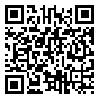BibTeX | RIS | EndNote | Medlars | ProCite | Reference Manager | RefWorks
Send citation to:
URL: http://rmm.mazums.ac.ir/article-1-75-en.html
Background: Members of this genus Aureobasidium are ubiquitous microorganisms which can be isolated from wide ranges of substrates such as plant materials (phyllosphere, plant debris, bark, roots, fruits and wood), soil, dead wood, air, and as rare etiologic agent of pheohyphomycosis, keratomycosis, septicemia, peritoneal sepsis, and dermatological infections in human. Very little is known on the identity, substrates and distribution of Aureobasidium spp. in Iran.
Materials and Methods: Fourteen Aureobasidium isolates were recovered from vascular tissues of pome and stone fruit trees displaying decline symptoms in orchards of West and East Azarbaijan provinces, Iran. Pure cultures were established by using a single spore technique. The identity of the isolates was determined using sequence data from ITS-rDNA region. Phylogenetic relationship among isolates was inferred based on sequence data from ITS-rDNA.
Results: A megablast search analysis of ITS sequence data at NCBI revealed the identity of Aureobasidium isolates as A. pullulans. A phylogeny inferred using sequence data from ITS region placed our isolates together with the other A. pullulans var. pullulans in GenBank. Morphological and cultural characteristics were in agreement with the description for A. pullulans var. pullulans. Conclusion: Our results represent new report on the occurrence of A. pullulans var. pullulans in Iran. As A. pullulans is known as a rare etiologic agent of pheohyphomycosis, keratomycosis, septicemia, peritoneal sepsis, and dermatological infections in human, possible occurrence and involvement of A. pullulans in human infections should be taken into account.
| Rights and permissions | |
 |
This work is licensed under a Creative Commons Attribution-NonCommercial 4.0 International License. |








